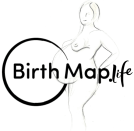Birth Plans were introduced to provide a sense of agency to women in an increasingly medicalised maternity care system. They were intended to improve communication between maternity care providers and women and were generally considered a process of education. However, in the 40 years since their implementation, they have often been reduced to templates and checklists, which no longer facilitate communication between care providers and women and hence impact on informed decision making. In addition, the term ‘plan’ has been widely criticised for its perceived lack of flexibility and there is a call for a universal approach to birth planning which reclaims its intended purpose. This study seeks to evaluate aspects of a new woman-centred, structured approach to birth preparation that have been developed in response to these issues, Birth Cartography.
Study Title: Birth Map 2022 study (BM2022)
Principal Investigators: Catherine Bell; Professor Deborah Davis; Dr Sally Muggleton; Professor Hannah Dahlen
What is the purpose of this study?
This study aims to evaluate the experience with Birth Mapping across all models of maternity care to better understand how it impacts the communication and decision making of pregnant women as navigate the maternity system.
The role of participants is to actively evaluate The Birth Map for effectiveness in facilitating communication and informed decision making. The study asks you to complete an initial questionnaire and then use the study smartphone App to record short reflections on your experience throughout your pregnancy and shortly after birth. An additional interview will be offered to some participants after the birth.
It is hoped the results of this study will help us to advise governments, health care providers and pregnant mothers and their families/friends on how best to facilitate communication and informed decision making in maternity care.
What does this study involve?
Participants in this study will be provided with either a digital or print copy of The Birth Map; boldly going where no birth plan has gone before. The book has been independently developed by Catherine Bell to aid communication and decision making in maternity care. At the beginning of the study, a short survey will be completed to provide demographic data. Participation in this study involves using a smartphone app to record reflections about your experiences with these resources in the context of your birth preparations. These will be up to 5 minutes each, recorded after your antenatal appointments and shortly after birth. These reflections will cover:
· experience during the antenatal appointment
· How using the book (if at all)
· feelings at that point
· How the mapping process is impacting maternity/health care: What is working, or not, and why.
· After birth, a reflection on how this preparation worked out
Some participants will also be invited to an interview 6-8 weeks after the birth, for a deeper reflection on your experiences. Invitations will be sent 4 weeks after your birth, seeking interviews with participants from each model of care.
STUDY CONTACT: catherine.bell@canberra.edu.au
This study has been approved by the University of Canberra Ethics Committee.
Study Update
The data collection phase is complete. Data analysis is underway.
Publications: email Catherine.Bell@canberra.ed.au
Publications
A Systematic Review of Birth Plans
Birth Plans: A systematic, integrative review into their purpose, process, and impact
Abstract
Background
The birth plan was introduced in the 1980s to facilitate communication between maternity care providers and women and increase agency for childbearing women in the face of medicalised birth. Forty years on, the birth plan is a heterogeneous document with uncertainty surrounding its purpose, process, and impact. The aim of this review was to synthesise the evidence and improve understanding of the purpose, process and impact of the birth plan on childbearing women’s experiences and outcomes.
Methods
This systematic review followed the PRISMA guidelines. A comprehensive search strategy was designed and applied to electronic databases CINAHL, MEDLINE, PsychINFO, Cochrane Library, Scopus, and ClinicalTrials.gov. Articles were appraised using the Crowe Critical Appraisal Tool and a five-step integrative approach to analysis followed.
Findings
Eleven articles were identified, all quantitative in nature. It is clear that the general purpose of birth plans is communication, with decision making a key factor. Even though the processes of birth planning were varied, having a birth plan was associated with generally positive birth outcomes.
Conclusions
Despite the heterogeneity of birth plans, birth plans were associated with positive outcomes for childbearing women when developed in collaboration with care providers. The act of collaboratively creating a birth plan may improve obstetric outcomes, aid realistic expectations, and improve satisfaction and the sense of control.

